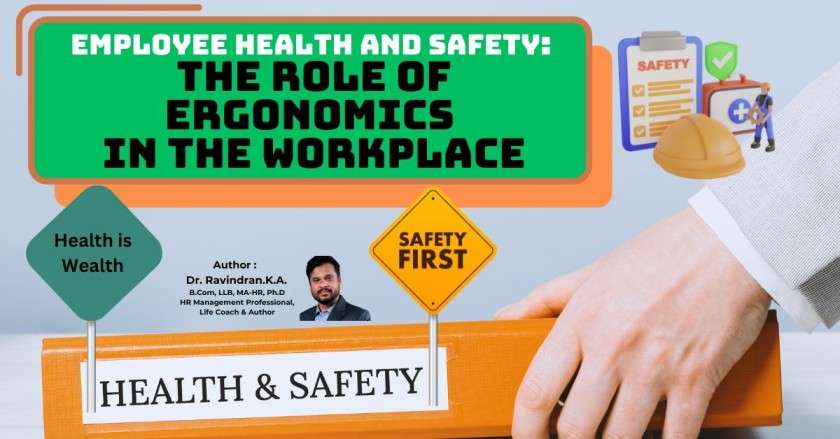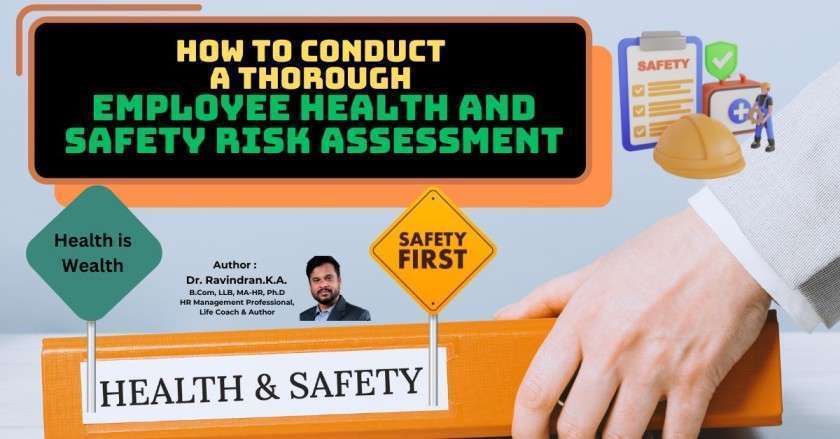Why Employee Health and Safety Should Be Your Top Priority
In today’s fast-paced world of business, it’s easy to focus on making more money and growing your company. However, employee health and safety are vital to your organization’s success. Good workplace health is about more than just running smoothly and making a lot of money. For a company to truly succeed, it must be healthy in all aspects. This makes workplace employee health one of the most important things to take care of.
Thank you for reading this post, don't forget to subscribe!Employee health means how healthy a company’s workers are, both physically and mentally. The health of your employees directly affects how well your company performs, including how much work is done and how much money is made. It’s not just about following OSHA rules. It’s about creating plans that help your employees be healthy, avoid getting sick, and feel supported. When you make employee health policies a priority, your workplace becomes a better place for people to work. Employees feel they are growing and that their company values them.
Key Takeaways
- Workplace health is essential for the success of any organization, beyond just day-to-day operations.
- Employee health, including physical and mental well-being, directly impacts an organization’s productivity and revenue.
- Implementing effective employee health policies fosters a positive work environment and supports employee growth and engagement.
- Prioritizing employee health and safety goes beyond OSHA regulations, requiring active strategies to promote healthy behaviors and provide employee support.
- Investing in employee health and safety can yield significant benefits for your organization, including improved productivity, reduced costs, and enhanced employee morale and retention.
Understanding Employee Health and Safety
Employee health is all about how well a company’s workers are doing, both physically and mentally. It’s not only about following safety rules at work but, importantly, it means making efforts to keep employees healthy and support them. This helps a business do better by boosting productivity and income. When a company cares for its employees’ health, it becomes a place where people feel appreciated, learn, and thrive.
Defining Employee Health and Well-being
Employee health and well-being look at more than just keeping workers physically safe. It’s about helping them be happy and successful in all areas of life. This support leads to employees feeling good about their jobs, being less stressed, and enjoying better health.
Importance of a Safe and Secure Workplace
Creating a safe workplace matters a lot. It ensures everyone works well together, reducing the chances of accidents. Managers play a vital role in setting up and following safety steps. These steps should be clear to all and are crucial for a productive and safe workplace.
Benefits of Prioritizing Employee Health and Safety
Investing in programs for your employees’ health and safety can really pay off. It boosts how much work they get done, cuts down on healthcare costs, and keeps them happy. This makes them want to stay with your company longer.
Improved Productivity and Reduced Absenteeism
Sometimes, employees are at work, but they’re not being productive. Health programs at work can fix this by getting everyone more involved and healthier. This means less money spent on healthcare for your company.
These programs also make sure your employees don’t miss work often. This includes when they need to see a doctor or are sick. So, by having health support right at your workplace, everyone wins. There are more smiles and less money lost from not working.
Lower Health Risks and Healthcare Costs
Starting a health program for your employees means they eat better and exercise more. This lowers risks like high blood pressure. It’s because they learn how to be healthier at work.
When your team is healthier, you spend less on their health needs. So, these programs are not just good for your employees, but for your company’s wallet too.
Enhanced Employee Morale and Retention
Employees are like gold for any business. They shine the best when they feel valued and get good perks. Health benefits show just how much you care for them. This makes them want to stay with you longer.
When workers leave too soon, it costs a lot and can harm your company’s vibe. Happier employees stay longer. They feel appreciated and supported. So, with the right care and environment, they stick around more.
Employee Health and Safety Compliance
Governments set rules to make sure workplaces are safe. Companies must follow these laws. They have to provide a safe place to work and teach employees how to stay safe. Also, they must give safety gear for free.
Legal Requirements and Regulations
In India, both employers and workers need to follow safety rules. If a worker sees something dangerous, they must tell their boss. If it’s not fixed, the worker should talk to someone who handles safety at work.
It’s important to have safety information and plans at work. But, this alone won’t prevent accidents. Workers and their managers must work together to keep everyone safe.
Occupational Health and Safety Standards
Everyone in a company must know about safety. This means having clear rules and a good plan to keep people well. All this helps make work a safe and productive place to be.
Consequences of Non-Compliance
Not following safety rules can lead to big problems. This includes fines and harm to a company’s name. If a worker is worried about safety and bosses don’t fix it, they can ask for help.
Implementing Effective Employee Health and Safety Programs
It’s key to put your staff’s health first in your company. This doesn’t have to cost a lot but is valuable. Start by working with leaders and HR to pick out good health strategies. This might mean doing health check-ups each year. You should also look for workplace dangers and fix them before anyone gets hurt.
Conducting Risk Assessments and Hazard Identification
Doing regular checks for risks and finding workplace dangers is essential. It lets you make things safer. This includes looking around your workplace often, talking with employees, and checking incident reports closely. These steps help you find and fix problems before they cause harm.
Providing Safety Training and Protective Equipment
Keeping your workers safe means giving them the right training and gear. Teach them first aid, how to handle emergencies, and to use tools safely. Make sure they have the right safety gear for their jobs. This keeps your team safe while they work.
Promoting a Culture of Safety and Well-being
Making a workplace where safety and well-being matter keeps your program strong. This can mean letting your team share concerns, taking time off, and helping with mental health. Offering healthy food and exercises can also make work a positive place.
Conclusion
Keeping workers safe and healthy is critical for a company’s success. By putting in place the right safety steps, businesses safeguard their staff. This effort boosts morale, meets legal needs, and makes the company look good. It’s an investment that creates a safer, happier, and more effective workplace.
Valuing worker health and safety creates a positive work vibe. It lifts spirits, cuts accident costs, and keeps everyone following the rules. Key safety steps include checking for risks, training on safety, and giving protective gear. These actions really improve how safe and well workers are.
In India, it’s the law for employers to care for their workers’ health and safety. Acts like the 1948 Regulation and 2005 Safety at Work Act have made rules even stricter. They highlight the need to keep workplaces safe and secure.
FAQ
What is employee health and well-being?
Employee health means the health of a company’s workers. This includes physical and mental health. It’s more than just following OSHA rules. Employers need to actively encourage healthy living, fight sickness, and help their workers.
Why is a safe and secure workplace important?
A safe workplace is key to fewer accidents and better work. It needs clear safety rules that everyone, from bosses to workers, must follow. This way, everyone’s job goes smoothly.
How does prioritizing employee health and safety benefit organizations?
Paying attention to health and safety boosts how well people work. It cuts down on sick days and saves on health care costs. It also keeps workers happy and wanting to stay at their jobs, creating a great place to work.
What are the legal requirements for employee health and safety?
Businesses must follow laws that keep the workplace safe. This means making the place safe, training people right, and giving them safety gear. Not following these laws can mean getting in trouble and hurting the company’s name.
How can organizations implement effective employee health and safety programs?
Creating a good health and safety program involves looking at risks, giving safety training and gear, and making sure everyone always thinks about safety and health. Also, places that help with health and offer wellness programs can be a big help.
 hroptimum
hroptimum



